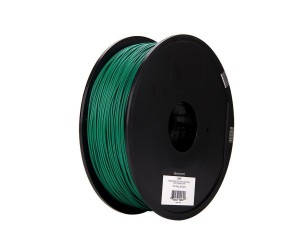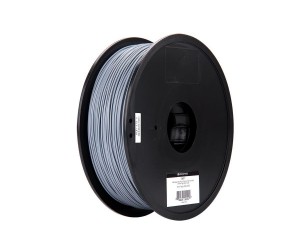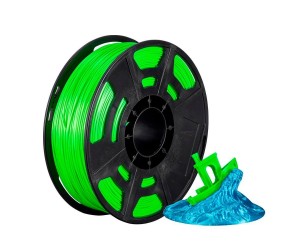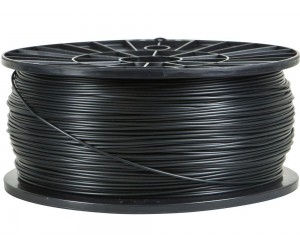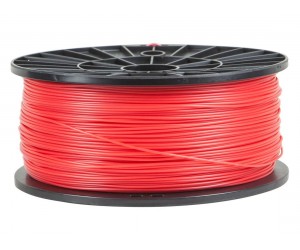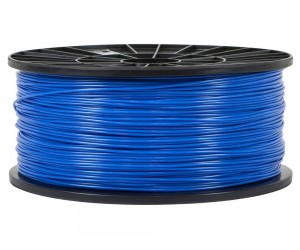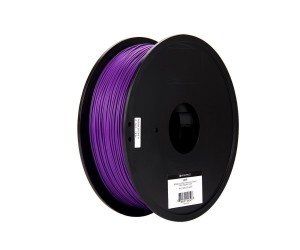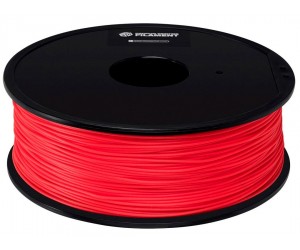Tech
PLA Plus+ Premium 3D Filament 1.75mm 1kg/spool, Green
PLA Plus+ is a good choice for a printing material if you are looking for high accuracy and high resolution. It does not require a heated base and has a very low shrinkage rate (0.3%). PLA Plus+ is stronger than ordinary PLA, possessing the same strength as normal ABS material. This 1.0kg spool features a thickness of 1.75mm ±0.10mm, with a roundness variation of only 0.03mm. It has a nominal processing temperature range of 205 ~ 225°C (401 ~ 437°F). Thickness and roundness factors are laser measured at the factory to ensure accuracy over the entire length of the filament. The negatives of using PLA Plus+ is that it is vulnerable to degradation from moisture, sunlight, and heat. Additionally, it is more prone to overheating during processing, which can cause dripping and drooping if it gets too hot.Select PLA Plus+ Premium 3D Filament 1.75mm 1kg/spool, Gray
PLA Plus+ is a good choice for a printing material if you are looking for high accuracy and high resolution. It does not require a heated base and has a very low shrinkage rate (0.3%). PLA Plus+ is stronger than ordinary PLA, possessing the same strength as normal ABS material. This 1.0kg spool features a thickness of 1.75mm ±0.10mm, with a roundness variation of only 0.03mm. It has a nominal processing temperature range of 205 ~ 225°C (401 ~ 437°F). Thickness and roundness factors are laser measured at the factory to ensure accuracy over the entire length of the filament. The negatives of using PLA Plus+ is that it is vulnerable to degradation from moisture, sunlight, and heat. Additionally, it is more prone to overheating during processing, which can cause dripping and drooping if it gets too hot.Hi-Gloss 3D Printer Filament PLA 1.75mm 1kg/spool, Green
The Hi-Gloss series of PLA filaments add an attractive shine to print projects. With the ideal processing temperatures between 200 ~ 220°C and a diameter of 1.75mm ±0.05mm, these filaments provide a beautiful contrast versus typical opaque PLAs. Print crystals that truly shine, water that glistens, or contrast against flat or opaque colors can bring a new depth to 3D printed projects that can otherwise feel dull or lacking in luster. These filaments are great for sets, minis, art projects, or any prints that need extra depth and beauty of color.3D Printer Filament PLA 1.75mm 1kg/spool, Black
PLA is a good choice for a printing material if you are looking for high accuracy and high resolution. It extrudes at lower temperatures, does not require a heated base, and has a very low shrinkage rate (0.3%). PLA is harder than ABS, but is therefore also a bit more brittle. This 1 kg spool features a thickness of 1.75mm ±0.10mm, with a roundness variation of only 0.03mm. It has a nominal processing temperature of 210° C (410°F). Thickness and roundness factors are laser measured at the factory to ensure accuracy over the entire length of the filament. The negatives of using PLA is that it is vulnerable to degradation from moisture, sunlight, and heat. Additionally, it is more prone to overheating during processing, which can cause dripping and drooping if it gets too hot.3D Printer Filament PLA 1.75mm 1kg/spool, Red
PLA is a good choice for a printing material if you are looking for high accuracy and high resolution. It extrudes at lower temperatures, does not require a heated base, and has a very low shrinkage rate (0.3%). PLA is harder than ABS, but is therefore also a bit more brittle. This 1 kg spool features a thickness of 1.75mm ±0.10mm, with a roundness variation of only 0.03mm. It has a nominal processing temperature of 210°C (410°F). Thickness and roundness factors are laser measured at the factory to ensure accuracy over the entire length of the filament. The negatives of using PLA is that it is vulnerable to degradation from moisture, sunlight, and heat. Additionally, it is more prone to overheating during processing, which can cause dripping and drooping if it gets too hot.3D Printer Filament ABS 1.75mm 1kg/spool, Blue
ABS is one of the most commonly used filament types in 3D printing. It has a high tensile strength and good overall toughness. It has a low density and is softer than PLA, which means lower weight and lower cost when printing large models. Hardness is such that no white dot appears when bending. This 1 kg spool features a thickness of 1.75mm ±0.10mm, with a roundness variation of only 0.05mm. It has a nominal processing temperature of 230°C (446°F). Thickness and roundness factors are laser measured at the factory to ensure accuracy over the entire length of the filament. The negatives of using ABS is that it can give off a white smoke with a concentrated odor. It is best to ensure that the printing room is well ventilated when using ABS. Additionally, it has a high moisture absorption rate. Depending on the overall humidity level of the printing environment, an opened spool can absorb enough moisture after a couple of days that high temperature printing could cause bubbles or pocks in the extrusion. It is therefore recommended to not open a spool until you are ready to print and to store any unused portion with silica gel and/or an active dehumidifier to reduce the amount of moisture it can absorb.Select PLA Plus+ Premium 3D Filament 1.75mm 0.5kg/spool, Green
PLA Plus+ is a good choice for a printing material if you are looking for high accuracy and high resolution. It does not require a heated base and has a very low shrinkage rate (0.3%). PLA Plus+ is stronger than ordinary PLA, possessing the same strength as normal ABS material. This 1.0kg spool features a thickness of 1.75mm ±0.10mm, with a roundness variation of only 0.03mm. It has a nominal processing temperature range of 205 ~ 225°C (401 ~ 437°F). Thickness and roundness factors are laser measured at the factory to ensure accuracy over the entire length of the filament. The negatives of using PLA Plus+ is that it is vulnerable to degradation from moisture, sunlight, and heat. Additionally, it is more prone to overheating during processing, which can cause dripping and drooping if it gets too hot.PLA Plus+ Premium 3D Filament 1.75mm 1kg/spool, Magenta
PLA Plus+ is a good choice for a printing material if you are looking for high accuracy and high resolution. It does not require a heated base and has a very low shrinkage rate (0.3%). PLA Plus+ is stronger than ordinary PLA, possessing the same strength as normal ABS material. This 1.0kg spool features a thickness of 1.75mm ±0.10mm, with a roundness variation of only 0.03mm. It has a nominal processing temperature range of 205 ~ 225°C (401 ~ 437°F). Thickness and roundness factors are laser measured at the factory to ensure accuracy over the entire length of the filament. The negatives of using PLA Plus+ is that it is vulnerable to degradation from moisture, sunlight, and heat. Additionally, it is more prone to overheating during processing, which can cause dripping and drooping if it gets too hot.PLA Plus+ Premium 3D Filament 1.75mm 1kg/spool, Purple
PLA Plus+ is a good choice for a printing material if you are looking for high accuracy and high resolution. It does not require a heated base and has a very low shrinkage rate (0.3%). PLA Plus+ is stronger than ordinary PLA, possessing the same strength as normal ABS material. This 1.0kg spool features a thickness of 1.75mm ±0.10mm, with a roundness variation of only 0.03mm. It has a nominal processing temperature range of 205 ~ 225°C (401 ~ 437°F). Thickness and roundness factors are laser measured at the factory to ensure accuracy over the entire length of the filament. The negatives of using PLA Plus+ is that it is vulnerable to degradation from moisture, sunlight, and heat. Additionally, it is more prone to overheating during processing, which can cause dripping and drooping if it gets too hot.Premium 3D Printer Filament PETG 1.75mm, 1kg/Spool, Red
It's the perfect filament to combine strength and flexibility, which is why it's used in so many mechanical parts or robotics. The filament is super transparent with a glossy finish. It has great chemical resistance with good acidic and alkali resistance. The superb chemical resistance is why the FDA has approved PET as acceptable for direct food contact. The filament is environmentally friendly and recyclable. PETG is known for it's transparency and clarity, so you're getting the benefits of both PLA and ABS in PETG. The nominal print temperature is 230 ~ 250°C (446 ~ 482°F).






